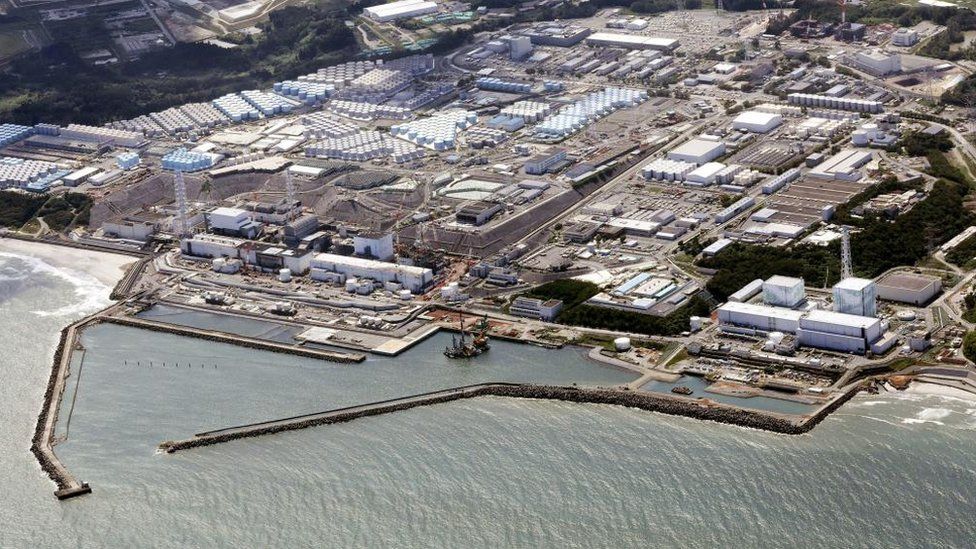Fukushima: Discharge from Japan nuclear plant safe, tests show
- Published

The water discharge from Fukushima into the Pacific Ocean began on Thursday via an underground tunnel
The operator of the Fukushima nuclear plant says seawater samples taken around the facility are safe.
Tepco's test results come a day after the release of treated contaminated water from the plant in Japan, which was destroyed in a tsunami in 2011.
The discharge into the Pacific Ocean has sparked protests in the region and retaliation from Beijing.
Japan told its citizens living in China to keep a low profile on Friday, including talking quietly in public.
"When going out, try to be cautious, such as not speaking Japanese loudly unnecessarily," the country's embassy in Beijing said. It also warned citizens to "pay close attention to the surroundings of the embassy" if planning to visit.
Japan's consulate in Chinese-ruled Hong Kong also issued a notice warning of protests there relating to the water release, after 100 people took to the streets on Thursday objecting to the discharge.
Chinese officials have called Japan's decision to release the water "extremely selfish and irresponsible", despite the UN's nuclear watchdog approving the plan.
Beijing, the biggest buyer of seafood from Japan, imposed a ban on all such imports after the discharge of water began.
It has also seen panic buying of sea salt amid fears that future supplies could be contaminated.
China's biggest salt producer, the state-run National Salt Industry Group, said it was ramping up supplies as people in some parts of the country had rushed to stock up following the water release.
But Tepco said seawater samples taken on Thursday afternoon showed radioactivity levels were well within safe limits.
"We confirmed that the analysed value is equal to the calculated concentration and that the analysed value is below 1,500 Bq/L," Tepco spokesman Keisuke Matsuo told a news conference.
Becquerels per litre - or Bq/L - is a measure of radioactivity. The national safety standard is 60,000.
The results were "similar to our previous simulation and sufficiently below" the safety limit, Mr Matsuo added.
He said Tepco would continue to conduct analysis every day for the next month and "even after that, maintain our analysis effort".
Japan's environment ministry said it had also collected seawater samples from 11 different locations on Friday and would release the results on Sunday.
More than a million tonnes of water stored at Fukushima will be discharged over the next 30 years.
Since 2011, Tepco has been pumping in water to cool the remains of three reactors. The resulting contaminated water is treated and stored in more than 1,000 massive tanks.
The plant operator says the water has been filtered of all radioactive elements except for tritium and is safe.
On Thursday the International Atomic Energy Agency (IAEA) said samples taken from the first batch of diluted water prepared for discharge showed tritium levels were well within safe limits.
Most scientists agree but environmental pressure group Greenpeace has said the filtration process, known as ALPS, does not work and that a vast amount of radioactivity will be released into the ocean.
Watch: Shaimaa Khalil visits the treatment plant to see how it works
Related Topics
- Published24 August 2023
- Published24 August 2023
- Published25 August 2023
- Published23 August 2023
- Published13 July 2023